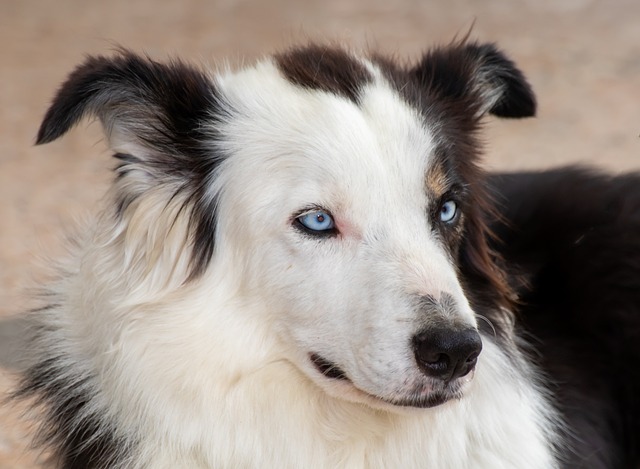
Is standing for a long time harmful to a dog's body
When we see dogs performing on their hind legs in circuses or street entertainers training dogs to stand for prolonged periods to beg,
When you notice your beloved dog constantly scratching, biting itself, or see its once-smooth coat becoming red, swollen, or patchy, that heartache and worry is something every dog owner understands deeply. Skin issues are among the most common health problems in dogs—statistics show nearly 30% of dogs will experience at least one skin condition requiring medical intervention in their lifetime. Why are these furry friends so prone to skin troubles? The answer lies in the complex interplay of physiological traits and environmental factors.
Dogs’ skin physiology makes them more vulnerable than humans. Canine skin has a pH of 6.2–7.4 (more alkaline than humans’ 5.5–6.0), weakening its barrier function. Notably, their stratum corneum has only 3–5 cell layers compared to our 10–15, leaving their skin more exposed to irritants and pathogens. Add a dense fur coat creating warm, humid pockets ideal for bacterial/fungal growth, and it’s clear why scratching signals genuine distress we can scarcely imagine.
Allergies are a leading culprit. Like humans with hay fever, dogs react to allergens like dust mites, pollen, or mold, triggering atopic dermatitis with intense itching and inflammation. Food allergies—to beef, chicken, dairy, or wheat—compound the issue, often manifesting as ear infections, paw licking, or belly rashes. The heartbreaking "itch-scratch-itch" cycle can escalate to severe skin damage without intervention.
Parasites pose another major threat. Flea bites (and their allergy-inducing saliva) cause flea allergy dermatitis, while ticks transmit diseases and local inflammation. Stealthier mites, like sarcoptic mange or ear mites, trigger relentless itching and hair loss. These tiny tormentors inflict misery beyond words—seeing your dog lose sleep to insatiable itching is every owner’s nightmare.

Endocrine disorders also impact skin health. Hypothyroidism leads to symmetrical hair loss, dry skin, and thinning fur; Cushing’s syndrome causes thin skin, pigmentation, and bruising. Often, skin changes are the first visible clues to these systemic illnesses, especially in senior dogs whose skin acts as a health diary.
Well-intentioned care can backfire. Overbathing strips protective oils, human shampoos disrupt pH, and harsh brushing damages the skin barrier. Even "safe" habits—like letting dogs lie on freshly mopped floors—may expose them to irritating residue.
Certain breeds face higher risks. Wrinkly breeds (e.g., Shar-Peis, Bulldogs) trap moisture and debris in skin folds; long-haired dogs (Goldens, Samoyeds) harbor dirt without proper grooming; white-coated pups are prone to sunburn. These traits remind us to tailor care by breed.
Seasons play a role too. Winter dryness and indoor heating dehydrate skin; summer humidity fuels fungal growth. Pollen surges in spring/fall worsen allergies, while new household cleaners or air fresheners may silently irritate.
Prevention demands vigilance. Regular brushing detects issues early and boosts circulation. Breed-appropriate shampoos, balanced bathing, and omega-3-rich diets fortify skin health. At the first sign of trouble, consult a vet—DIY treatments often worsen conditions. Remember, healthy skin isn’t just about looks; it’s a vital health indicator.
Watching your dog suffer is agonizing, but understanding causes empowers prevention. Each gentle brush stroke, every careful inspection, becomes a silent dialogue of love. When their coat regains its sheen and their eyes their sparkle, that joy is your reward—because protecting their health means safeguarding the unconditional trust they place in you.

When we see dogs performing on their hind legs in circuses or street entertainers training dogs to stand for prolonged periods to beg,

When we prepare to greet the dog's warm greeting as usual, we find that the once bright and clear eyes have become red and swollen, and the dog keeps scratching with its claws, with a look of discomfort and helplessness in its eyes.

When you notice your beloved dog constantly scratching, biting itself, or see its once-smooth coat becoming red, swollen,

When you see your beloved dog constantly scratching or notice suspicious black specks in its smooth fur, it’s natural to feel concerned. Parasites are a common health issue for dogs,

When we look into the eyes of dogs, the originally bright and clear eyes suddenly show distressing red bloodshot, and even become swollen and secrete more.

At the moment when the door closes, there comes the heart wrenching barking of dogs inside the house, or when they come home and see a chewed sofa and scattered slippers,